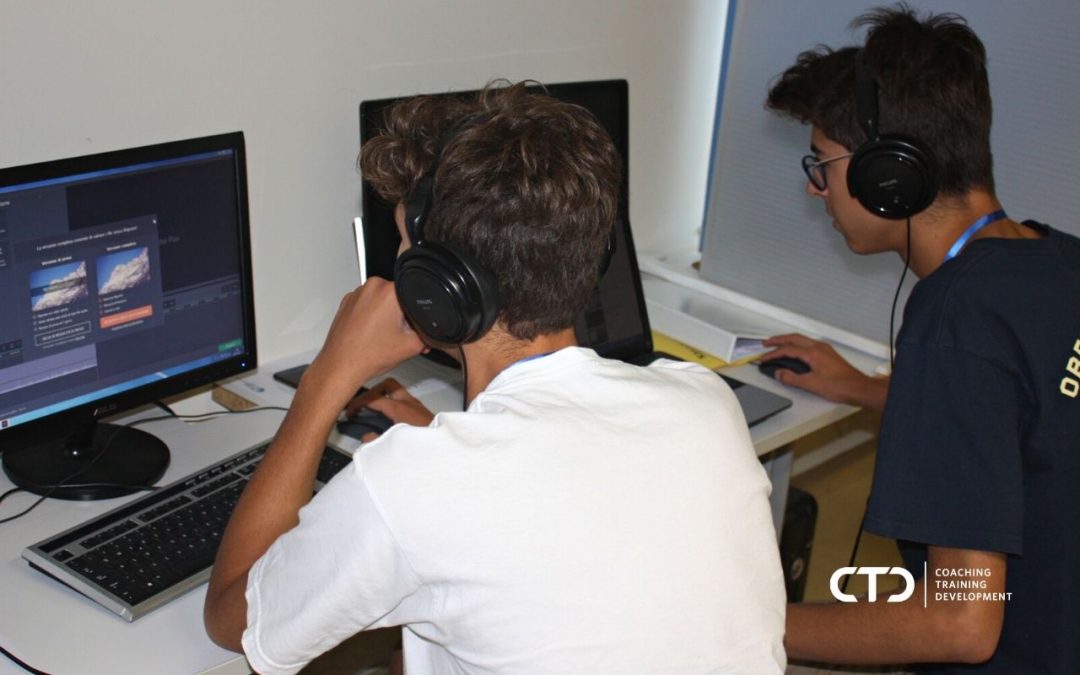If you are interested in critical thinking activities for your teen ager and adult students, here are some simple ‘teacher-coach’ techniques for you to use in the language classroom.
Those who knew me as a teenager wouldn’t have bet a penny on me growing up to work in a profession which involves giving presentations, leading teams, negotiating in public meetings, and making strategic decisions. I was always very shy but had dreams of being a different person, more confident. I had visions of myself as a successful businesswoman but was struggling to make it a reality. Then, along the path of my professional life as a teacher and educational manager, I came across the practice of coaching. I embraced my coaches’ practice and my life changed for the better.
This life event made me think, ‘what if I had known about these coaching strategies when I was younger? Would my goals have been easier to reach?’ Coaching has played a fundamental role in my life because it helped me to reach my full potential. We, as teachers, also have this power – to make a significant impact on our students’ performance and ensure they maximize their talents.
The teacher-coach approach
So, what can we do to fulfil this mission? The first thing that we must have clear is what our real objectives are. As language teachers, we aim to give our students everything they need to achieve a high level of language competence. We refer to the CEFR, which describes what students can do at different stages of their learning. We have a clear framework to follow and this makes the learning journey straightforward. But being a successful student is not just about knowledge. It’s about being able to perform as responsible citizens and to communicate effectively, not just talking in a grammatically correct way. It’s about thinking critically and creatively to find solutions and opportunities. We should be able to support our students to enhance the life skills they need, no matter what their life journey will be.
Cambridge Life Competencies
The Cambridge Life Competencies Framework sets out the criteria of what a student should be able to master, according to their age. It gives guidance on what areas we should focus on and how to integrate life competencies into the language classroom – the perfect place to develop these skills. The combination of a comprehensive life skills framework and the knowledge of some simple coaching techniques is the language teacher’s trump card. I am not saying that you must be a qualified coach to teach soft skills, because you already practise most of these techniques in your lessons. It’s just about scaffolding them and realising the connection between what you are using them for, according to the framework, and how. Coaching sessions can help you understand the role of the teacher and the student in this process of life skills acquisition. This awareness will lead you to extraordinary results.
Teacher-coach coaching techniques
Let’s have a look at how coaching techniques can help you to enhance secondary school students’ critical thinking, as described in the Cambridge Life Competencies Framework. During a coaching session, the coach and the ‘coachee’ have an understanding:
- the coach will not give answers to the coachee’s issues;
- the coach poses the relevant questions that will help the coachee to find their own answers (as a teacher-coach, you will have to ask questions that will push your students to think critically and to move beyond the simple language process to the ‘what is behind the language?’ phase.
The power of questioning
- Use high impact, powerful questions
- Use inquiry questions that will start the thinking process and will lead your student to understand and analyse ideas
- Choose questions that will stimulate discussion, and encourage problem-solving and decision making.
When talking about powerful questioning, I am thinking about those questions that go beyond the simple how, what, when, why questions. These answers can be found, for example, on the internet or in a piece of text in class. Powerful questioning inspires the process of critical thinking. It pushes our students to start reflecting or asking more questions to clarify the scope of the topic, and to investigate the facts to be able to offer their own point of view. Students will be pushed to ask themselves why this information may be important and how it can be used in the future. Some examples of powerful questions include:
- What does this really mean to you? (to facilitate awareness)
- What would be different if you had already achieved your goal? (to stimulate imagination)
- How could you transform this problem into an advantage? (to foster creative thinking)
When answering a question, students should also be able to articulate why their answer is important to them as individuals, and also their classmates. As teacher-coaches, we should create a database of powerful questions. These questions should lead to meaningful discussion and motivate students to overcome obstacles and create solutions.
Keep reading on cambridge.org

